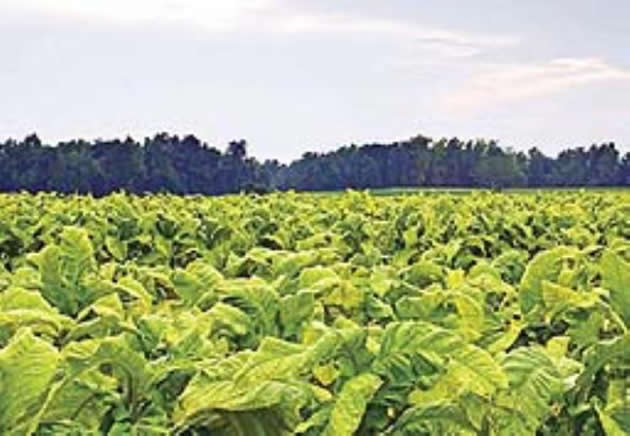EDITORIAL COMMENT: Sky is the limit for tobacco growers

Tobacco farmers continue to exceed expectations. From 1894 when the first flue-cured crop was grown near Mutare up to 2000, its production was dominated by whites. But the land redistribution programme occasioned a change in the racial profile of tobacco growers. Now indigenous people are dominating and up to 90 percent of them are in the communal and A1 sectors.
A few gave them a chance of excelling in growing the technically demanding crop. Indeed they struggled initially, the harvest dropping sharply from 2001, a year after white farmers achieved a record output of 237 million kilogrammes.
The skeptics, among them the opposition and white former commercial farmers, used the decline in production to back up their arguments that sought to discredit the land reform programme as “destructive.” They would not admit that the smaller harvests were partly caused by droughts that regrettably coincided with the formative years of the land reforms and the natural fact that the new farmers had not yet acquired sufficient experience to grow the crop competently. The naysayers were emboldened in 2009 when 58,5 million kg of tobacco was harvested.
They were however forced to eat their words in 2010 when the output more than doubled to 123,5 million kg. It was worse for them the following year when 132,5 million kg were realised, 144,5 million kg in 2012 and 166,7 million kg in 2013. In 2014, the new farmers attained their highest output since 2001 at 216 million kg. Last year, the crop was smaller at 198 million kg.
This year, the Government had estimated that the harvest would be down to 160 million kg given the drought in the 2015/16 growing season but the official output as reported last week is substantially higher than that projection — 192 million kg had been sold a day before the end of the marketing season.
Indeed, the 2015/16 summer agriculture season was tough for every farmer. Tobacco growers planted late due to the delay in the coming of effective rains. Right through the season the rainfall in the tobacco-growing belt — Mashonaland West, Manicaland, Mashonaland Central and Mashonaland East — did not rise to optimum levels.
But, like they have always done over the past 16 years, tobacco farmers have confounded critics and raised the hopes of the nation.
Reviewing the season and tobacco farmers’ performance, Agriculture, Mechanisation and Irrigation Development Minister, Dr Joseph Made said: “We suffered record breaking high temperatures for most of the season and rainfall at best was intermittent in most areas. Effective rainfall only came in December and as a result many growers had to replant particularly those without irrigation. This resulted in delays in the start of the selling season. Effectively tobacco injects foreign currency into the economy during the tobacco marketing season with close to $1 billion having been available to purchase the crop produced during the 2015/16 season.”
He praised them for their resilience.
Tobacco farmers have set a great example that growers of other key crops should follow.
There is a big challenge in regard to wheat production, a crop that is grown in winter under irrigation. Output has been declining since 2008 and last year 62 000 tonnes were harvested, a far cry from the 400 000 needed for national consumption yearly. The hectarage under the cereal has averaged 16 000 over the past decade, which is too low to produce sufficient wheat for the nation.
The poor performance is blamed on erratic power supplies and high production costs. Without reliable electricity supply, farmers cannot irrigate. We, however, note that Zesa has done well to minimise power cuts this year. What farmers want, going forward, is for them to be guaranteed that if they plant wheat, there would be constant electricity supply throughout winter for them to irrigate it and succeed.
On high production costs, we urge the Government to assist farmers, given that many of them are new on the land and lack resources to finance a commercial wheat growing enterprise. But it is not just the Government that can help in the recovery in wheat growing — bakers have a role too. They need to start contract growing systems with local farmers. Banks can do much more as well. This ensures that the economy saves money. Instead of spending $169 million importing wheat to cover the shortfall as was done last season, they channel it to capacitate local farmers.
This saves jobs too.
Another key crop that has always needed closer attention, but has happily got it is maize. Frequent droughts for an industry that relies on the summer rains have over the past few years hit growers of the staple crop, resulting in recurrent food shortages.
We are encouraged by the Government’s intervention through the $500 million command agriculture scheme. To start this year and run for three seasons, the programme would see selected farmers putting 400 000ha under maize countrywide. Each of them should be able to irrigate their crop and would receive free inputs. At harvest time, each of them would be bound to deliver five tonnes to the Grain Marketing Board.
Tobacco has done well, but growers should aspire to surpass the 2000 record of 237 million kg. We expect maize to do well from next season with the new command approach. A lot of work is needed in wheat growing.











Comments